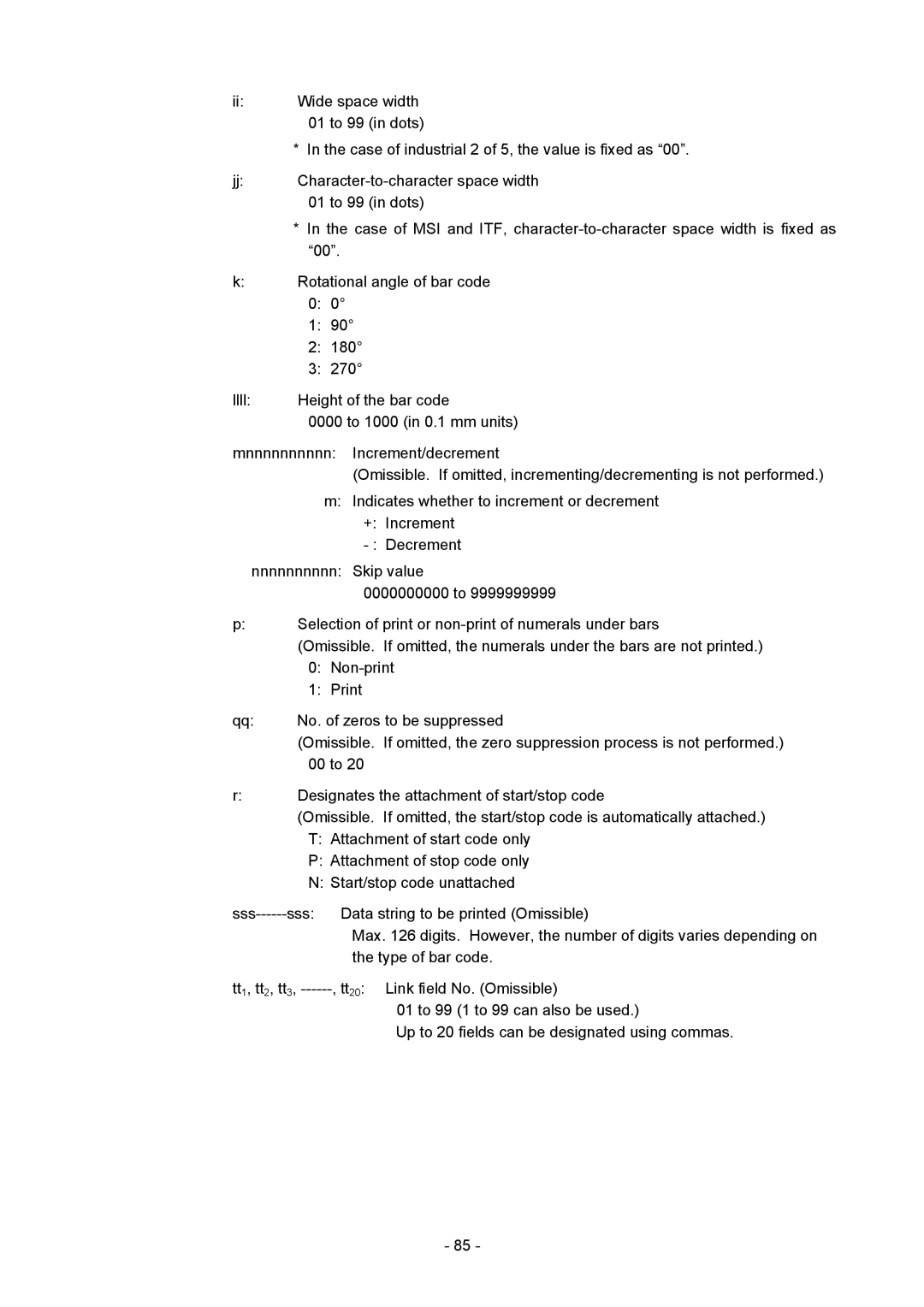ii:Wide space width
01to 99 (in dots)
*In the case of industrial 2 of 5, the value is fixed as “00”.
jj:
01to 99 (in dots)
*In the case of MSI and ITF,
k:Rotational angle of bar code
0:0°
1:90°
2:180°
3:270°
llll:Height of the bar code
0000 to 1000 (in 0.1 mm units)
mnnnnnnnnnn: Increment/decrement
(Omissible. If omitted, incrementing/decrementing is not performed.)
m:Indicates whether to increment or decrement +: Increment
nnnnnnnnnn: Skip value
0000000000 to 9999999999
p:Selection of print or
(Omissible. If omitted, the numerals under the bars are not printed.)
0:
1:Print
qq:No. of zeros to be suppressed
(Omissible. If omitted, the zero suppression process is not performed.) 00 to 20
r:Designates the attachment of start/stop code
(Omissible. If omitted, the start/stop code is automatically attached.)
T:Attachment of start code only
P:Attachment of stop code only
N:Start/stop code unattached
Max. 126 digits. However, the number of digits varies depending on the type of bar code.
tt1, tt2, tt3,
01 to 99 (1 to 99 can also be used.)
Up to 20 fields can be designated using commas.
- 85 -
